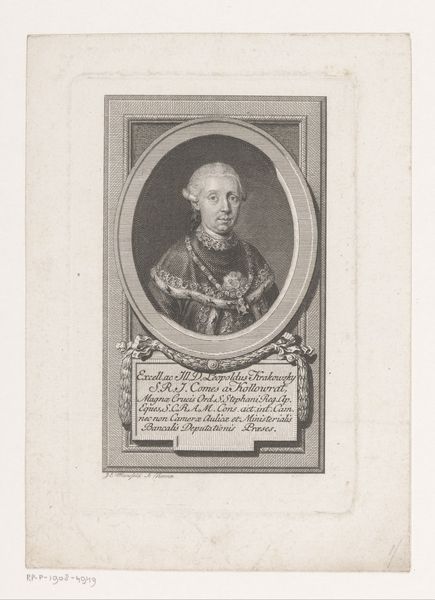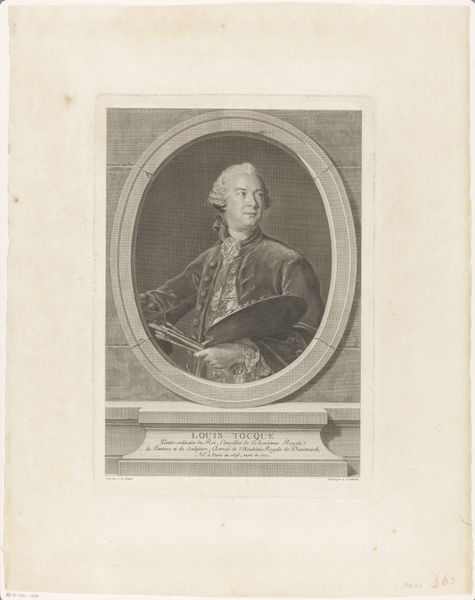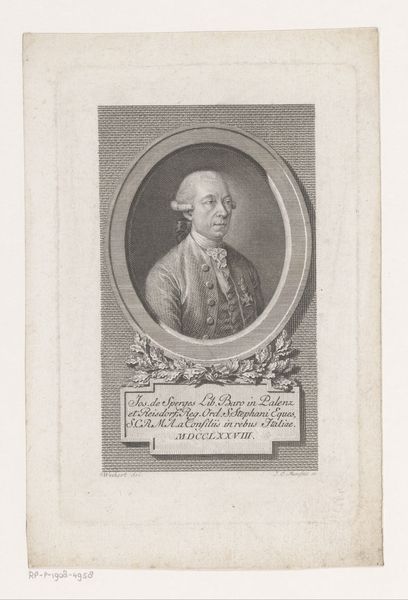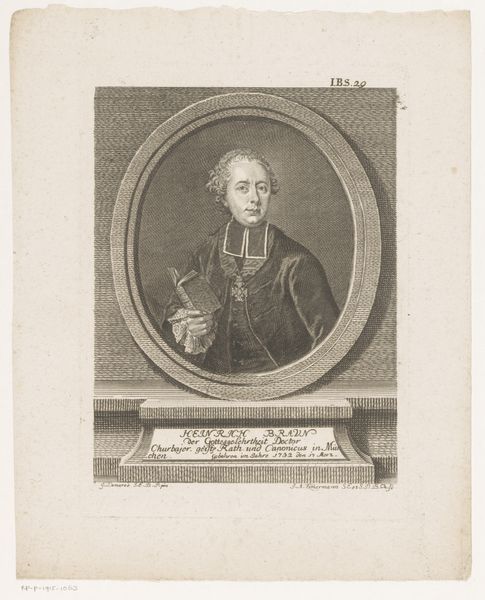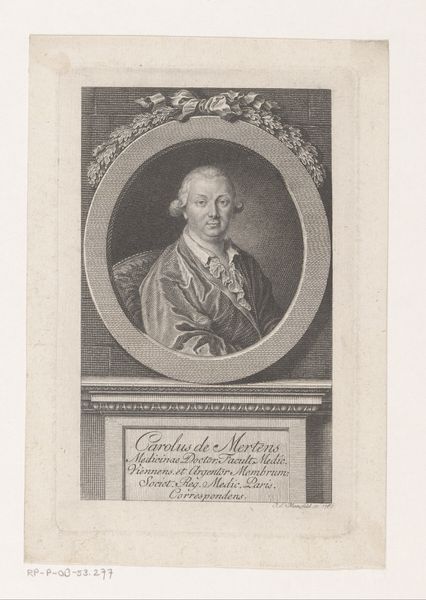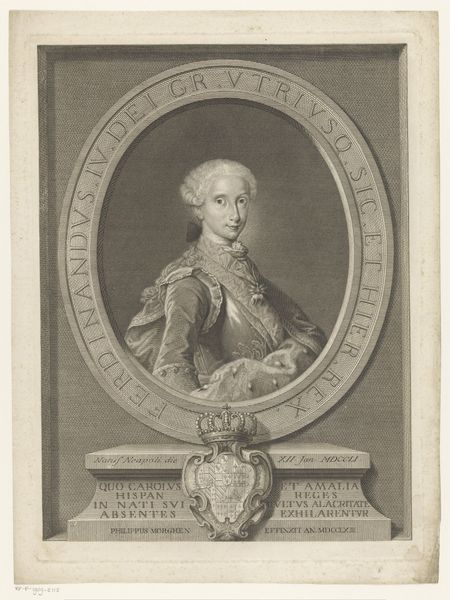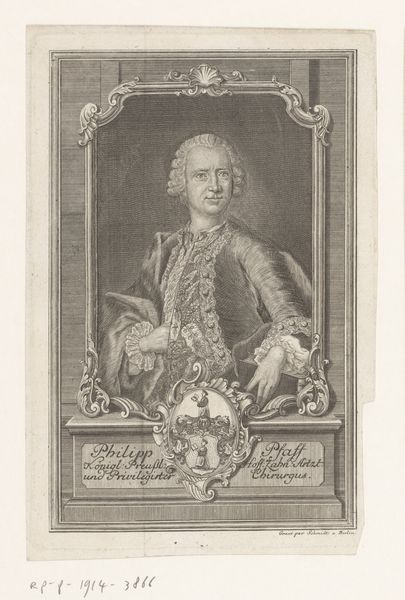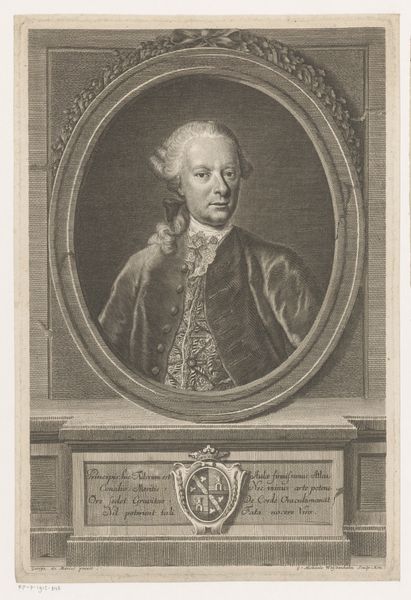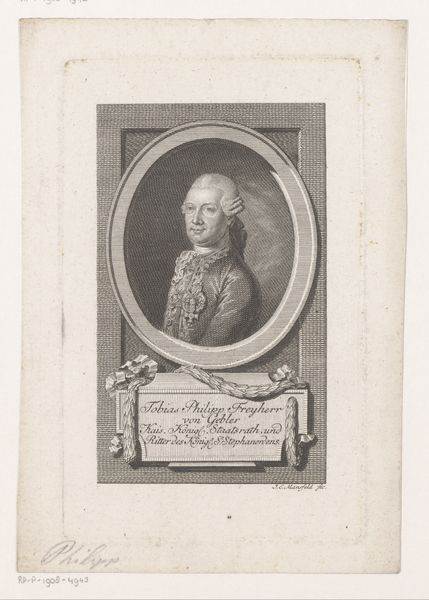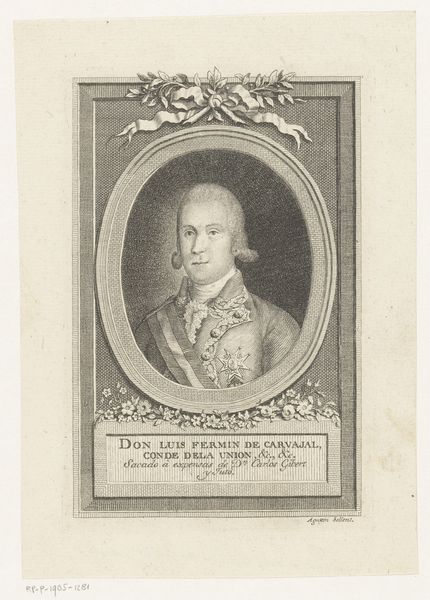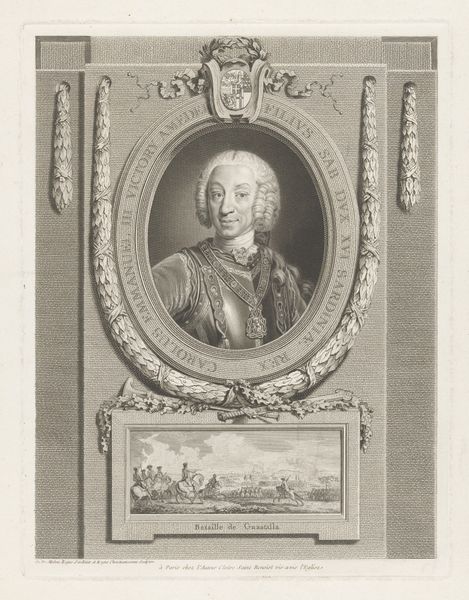
Dimensions: height 230 mm, width 160 mm
Copyright: Rijks Museum: Open Domain
Curator: I find myself immediately drawn to the incredible detail achieved in this engraving. The meticulous lines create such depth and texture. Editor: I agree, the technical skill is remarkable. What we're looking at is entitled "Portret van Ernst Sigmund de Warburg," created in 1767 by Johann David (I) Schleuen. It resides here at the Rijksmuseum, and is an example of Baroque portraiture using line engraving. We see Warburg framed in an oval with what looks to be his coat of arms displayed beneath. I wonder what his position and context might have been within broader social structures of his time. Curator: His gaze certainly conveys authority. It is carefully constructed with precision and decorum through pose and costume. Note the way the light catches the lace at his collar, reflecting status. The engraver meticulously uses varied strokes to render fabric, skin, and hair with equal attention to detail. Editor: And the details of the Warburg coat of arms are quite impressive too. Its presence tells us a great deal about the expectations, self-representation, and constructed historical narratives surrounding elite individuals like Ernst Sigmund in 18th-century Europe. These power structures determined and dictated so many aspects of everyday life. Curator: Indeed. And technically, observe how the texture of the engraving paper itself becomes a component of the final artwork. Schleuen makes masterful use of line weights to manipulate shadow and volume, considering the medium as a valuable element to the work. Editor: It invites reflection on social mobility. A portrait isn't simply a representation of a face. It communicates access, lineage, and desired societal standing—things Ernst sought and attained. Curator: It has truly been thought-provoking to contemplate this engraving's visual and technical harmony. Editor: I think by positioning Ernst’s persona within its era's historical context, we are able to re-examine not just Baroque art, but also the prevailing cultural climate that influenced and sustained its conventions.
Comments
No comments
Be the first to comment and join the conversation on the ultimate creative platform.
